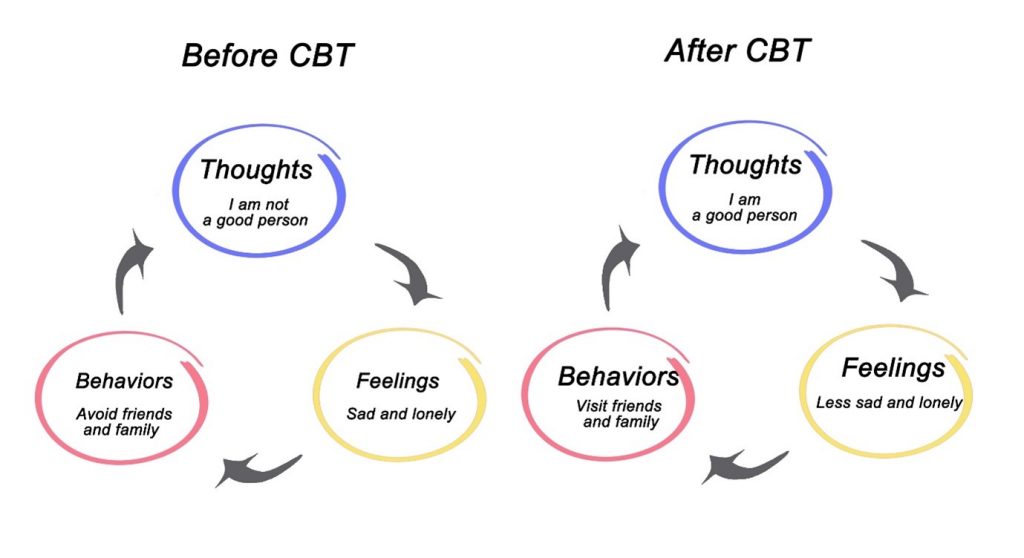Matthew Ogle of New York works as an administrator and clinician. In the following article, Matthew Ogle discusses cognitive behavior therapy, a form of psychotherapy that
focuses on changing negative patterns of thinking and behavior. By understanding that our thoughts, feelings, and behaviors are interconnected, changing one can lead to positive changes in the others.
Matthew Ogle of New York reports that from emotional concerns to bereavement to depression to stress to anxiety, the therapy has shown positive results for many individuals.
Understanding the Basics
Mental health professionals, like psychologists, counselors, and therapists, administer the structured psychotherapy to manage and treat various emotional concerns or mental health conditions. As far as such therapies go, CBT is one of the most common and best researched.
It's based on a few core principles, which are as follows:
- Psychological issues are partly based on learned patterns of unhealthy behavior.
- Mental health concerns are partly based on unhelpful or problematic thinking patterns.
- Psychological issues are partly based on unhealthy core beliefs, such as central ideas about the world or themselves.
- Those with psychological problems can learn healthier ways of coping with them, helping to relieve their symptoms and improve their overall wellness.
Matthew Ogle of New York explains that throughout CBT sessions, practitioners help their patients look closely at their thoughts and emotions, working toward understanding how such things affect their actions. The goal-based nature of the therapy allows people to unlearn negative behaviors and thought patterns and adopt healthier habits.
According to the professionals at Cleveland Clinic,
cognitive behavioral therapy typically takes place over a set number of sessions, wherein therapists utilize question-and-answer formats to achieve different perspectives. Thus, individuals leave the program able to respond better to pain, stress, and challenging circumstances.
Despite the limited session number, CBT is customized on a patient-by-patient basis, with therapists understanding that since every person is different, so is every mental health condition.
The Mental Health Disorders Treated By CBT
Cognitive behavioral therapy has allowed people of all ages (children and adolescents included) to attain a better quality of life after dealing with various mental health conditions.
Therapists utilize the treatment method for many conditions, including the following:
- Post-traumatic stress disorder (PTSD)
- Depression
- Anxiety
- Obsessive-compulsive disorder (OCD)
- Personality disorders
- Phobias
- Attention-deficit/hyperactivity disorder (ADHD)
- Substance use
- Alcohol use
- Eating disorders (including anorexia, binge eating disorder, and bulimia)

Industry professionals such as Matthew Ogle of New York note that CBT can also be effective in treating schizophrenia and bipolar disorder, provided it's combined with medication.
Therapists also use the technique to help those who may not have diagnosable mental health conditions and are dealing with everyday life challenges/changes instead. These include employment problems, grief, adjusting to new medication conditions, relationship issues, and divorce.
Matthew Ogle of New York says that cognitive behavioral therapy may have more uses than what initially meets the mind — studies suggest that the talk therapy type is effective in helping cope with non-psychological medical issues, such as:
- fibromyalgia
- insomnia
- migraines
- chronic fatigue syndrome
- irritable bowel syndrome (IBS)
The Inner Workings of Cognitive Behavioral Therapy
CBT is an evidence-based treatment method grounded in guided conversations in supportive, safe, nonjudgmental environments that allow for open dialogues with objective, specially trained professionals.
Experts mention that
results won't happen overnight. After all, Matthew Ogle of New York says that it takes time for people to build trust with their therapists and work with them to reach a more mentally healthy life.
Sessions typically work like this:
- The therapist obtains situational understanding. The start of the program focuses on discussing the patient's challenges, symptoms, and other concerns. Understanding the entire situation ensures goals can be set.
- The practitioner asks questions. These questions are situation dependent. From discussing the past to fears to phobias to troubling behaviors to negative thoughts, the questions often cover varied topics. Patients and their therapists explore the answers to understand how they respond to life's challenges.
- The therapist helps recognize unhealthy thoughts and behaviors. Interactive Q&A sessions allow patients to identify unhealthy emotions, behaviors, and/or beliefs.
- The practitioner works alongside the patient to adjust their behaviors and thoughts. They provide different perspectives and positive coping mechanisms for the patient to apply in the present and future to obtain a better quality of life.
Finding the Right CBT Therapists for the Patient
Matthew Ogle of New York explains that individuals interested in finding a cognitive behavioral therapist can search online through their state's psychosocial associations and talk to those they trust about finding the perfect practitioner for them.
 Industry professionals such as Matthew Ogle of New York note that CBT can also be effective in treating schizophrenia and bipolar disorder, provided it's combined with medication.
Therapists also use the technique to help those who may not have diagnosable mental health conditions and are dealing with everyday life challenges/changes instead. These include employment problems, grief, adjusting to new medication conditions, relationship issues, and divorce.
Matthew Ogle of New York says that cognitive behavioral therapy may have more uses than what initially meets the mind — studies suggest that the talk therapy type is effective in helping cope with non-psychological medical issues, such as:
Industry professionals such as Matthew Ogle of New York note that CBT can also be effective in treating schizophrenia and bipolar disorder, provided it's combined with medication.
Therapists also use the technique to help those who may not have diagnosable mental health conditions and are dealing with everyday life challenges/changes instead. These include employment problems, grief, adjusting to new medication conditions, relationship issues, and divorce.
Matthew Ogle of New York says that cognitive behavioral therapy may have more uses than what initially meets the mind — studies suggest that the talk therapy type is effective in helping cope with non-psychological medical issues, such as: